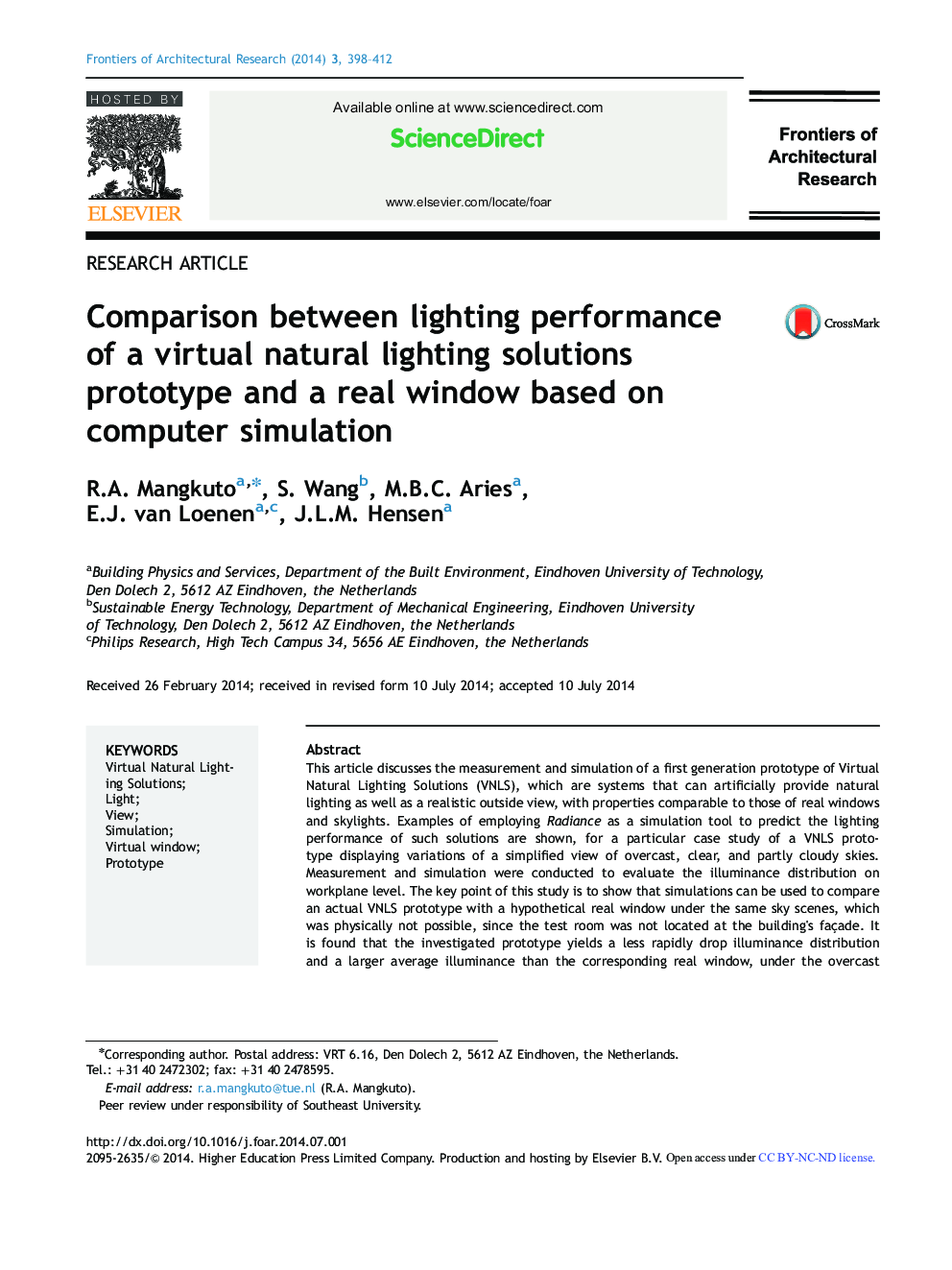| Article ID | Journal | Published Year | Pages | File Type |
|---|---|---|---|---|
| 270701 | Frontiers of Architectural Research | 2014 | 15 Pages |
This article discusses the measurement and simulation of a first generation prototype of Virtual Natural Lighting Solutions (VNLS), which are systems that can artificially provide natural lighting as well as a realistic outside view, with properties comparable to those of real windows and skylights. Examples of employing Radiance as a simulation tool to predict the lighting performance of such solutions are shown, for a particular case study of a VNLS prototype displaying variations of a simplified view of overcast, clear, and partly cloudy skies. Measurement and simulation were conducted to evaluate the illuminance distribution on workplane level. The key point of this study is to show that simulations can be used to compare an actual VNLS prototype with a hypothetical real window under the same sky scenes, which was physically not possible, since the test room was not located at the building׳s façade. It is found that the investigated prototype yields a less rapidly drop illuminance distribution and a larger average illuminance than the corresponding real window, under the overcast (52 lx compared to 28 lx) and partly cloudy (102 lx compared to 80 lx) sky scenes. Under the clear sky scene, the real window yields a larger average illuminance (97 lx) compared to the prototype (71 lx), due to the influence of direct sunlight.
